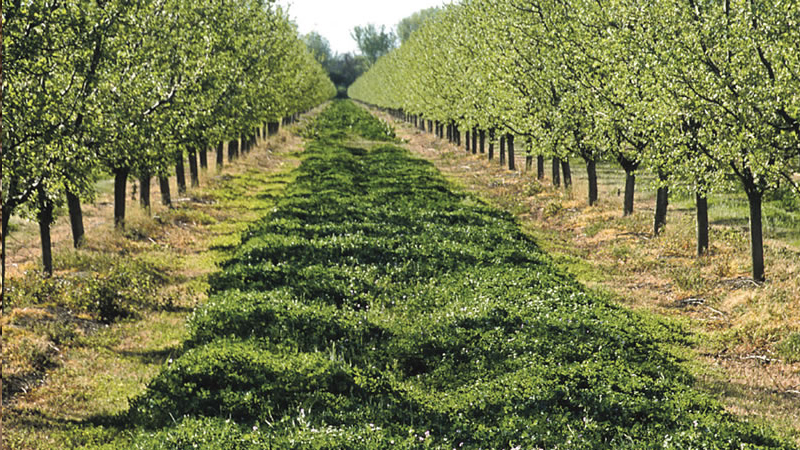Chelsea Mitchell
The Healthy Soils Summit, organized by the California Department of Food and Agriculture (CDFA) and U.S. Department of Agriculture (USDA) Natural Resource Conservation Service (NRCS) was held in early January in Sacramento (CA). Both agencies now have Healthy Soil Initiatives; NRCS’ program is ongoing, while funding for the CDFA Healthy Soils Initiative is expected to reach farmers in summer 2017. Part of a suite of climate smart agriculture programs, the CDFA Healthy Soils Initiative was funded at $7.5 million in September 2016 as part of California SB 859, greenhouse gas (GHG) reduction legislation.
According to an NRCS press release, the aim of the one-day Summit was
to “explore roles and collaborative opportunities for managing California soils for health and natural fertility, while reducing greenhouse gases.” The event was well attended by a diverse group of farmers, researchers, nonprofit organizations, and government representatives.
Healthy Soils Initiative
Governor Jerry Brown first announced creation of the Healthy Soils Initiative in 2015 as part of the state’s climate initiatives, which aim to reduce GHG emissions by 40 percent by 2030. The Healthy Soils Program will provide financial incentives and demonstration project funding for agricultural management practices that reduce GHG emissions by increasing carbon storage in soils and woody biomass on working agricultural lands. The program also is designed to provide tangible benefits to producers by supporting agricultural practices that increase crop yield, carbon sequestration, and increased water retention in times of flood or drought. At the Summit, Jenny Lester Moffit, Deputy Secretary of CDFA, announced that the first state grant solicitation will be released around June, with grants awarded in September 2017.
The CDFA Initiative defines soil health as the ability of soil “to build and retain adequate soil organic matter via the activity of plants and soil organisms.” However, there was some discussion during the Summit about how to draw a line between “unhealthy” and “healthy” soils. Many echoed the sentiment that while metrics to measure and strategies to improve soil health may be transferable across many regions, changes in soil quality may vary by region, crop, and climate. Carbon sequestration, water retention, and increased yield were all pointed to repeatedly as important metrics through which to measure soil health. The discussion around strategies for soil improvement included reduced tillage, use of cover crops, and application of compost, among others. Throughout the day, speakers and attendees emphasized the importance of taking local environmental and economic contexts into account when implementing healthy soil strategies.
Summit Panels
After updates on CDFA’s and USDA-NRCS’s work to date, four panels covered topics related to healthy soil and implementation of the Healthy Soils Initiative: Viewpoints of associations and organizations; Building local partnerships (growers and ranchers); Modeling tools and management practices; and Investors/economics. Panelists discussed work already underway on farms and ranches, in academia, the nonprofit sector, and in government offices to improve soil health in California.
Speakers on the first panel comprised of nonprofit organizations and agricultural trade groups included representatives of the Almond Board of California, Carbon Cycle Institute, California Farm Bureau, Sustainable Conservation, and the California Climate and Agriculture Network (CalCAN). These groups brought a diverse set of perspectives to the table in terms of what types of support are necessary to foster healthy soils in California.
All of these entities share the view that healthy soils will play an important role of the future of agriculture in California. Their discussion emphasized the importance of ensuring that the CDFA and USDA Healthy Soils Initiatives were complementary rather than duplicative, and making the programs accessible to a diverse set of farmers and ranchers across the state. The importance of securing additional resources for technical assistance was also voiced, as such funding is not included in the CDFA Healthy Soils Initiative.
Growers and ranchers lent their perspectives to the conversation during the “Building Local Partnerships” panel. Judith Redmond of Fully Belly Farms and John Heywood of Tollhouse Ranch discussed the work they’ve been doing to institute healthy soils management practices on their farms, which includes use of cover crops and compost, and rotational grazing. The panel emphasized the importance of financial feasibility for growers, arguing that healthy soils projects will gain little traction if they don’t help growers’ and ranchers’ bottom lines. Redmond made the case for ongoing funding in order to ensure the success of healthy soils projects. “We need to build the political capital it’s going to take to keep the program going over the next several decades,” she stated.
In the afternoon, the conversation shifted to focus on modeling carbon sequestration and measuring the economic impact of improving soil health. Researchers from Lawrence Berkeley National Lab, Colorado State University (CSU), and University of California Cooperative Extension lent their voices to the Modeling, Tools and Management Practice panel. Of particular note was the announcement that the online COMET-Planner tool, developed by Amy Swan and others at CSU for USDA NRCS to measure the GHG impact of conservation practices, has been improved so that its projections are more regionally specific to California. This change could help provide better estimates of the carbon benefit of healthy soils management.
The final panel focused on the Healthy Soils Initiative and healthy soils management from an economic perspective. Representatives of The Nature Conservancy (TNC) and Food System 6, a sustainable food business incubator and investment company, reviewed potential economic impacts. TNC discussed insights from its recent report, reThink Soil: A Roadmap to U.S. Soil Health, which aims to quantify the societal economic benefits to farmers as a result of improving soil health. The report focused on U.S. corn, soy and wheat cropland and found that adopting healthy soil practices on all acreage for these crops could lead to a $50 billion savings in societal and environmental impacts annually. The report also projected a 5 percent yield increase for farmers, resulting in a $150/acre profit boost.
However, TNC was quick to note the limitations of this work, suggesting the need for the report to be replicated using a California-specific model.
As the panel discussions wrapped up, State Conservationist, Carlos Suarez, made clear his support for the Healthy Soils Initiative and announced that NRCS will lend eight of its staff to provide technical assistance for the Initiative in California. This is an important piece to the success of the program, which currently lacks the funding for technical assistance — a key component to working with farmers and ranchers on healthy soils implementation.
The Environmental Farming Science Advisory Panel met in late January to discuss the proposed framework for the Healthy Soils Program. While implementation details are still being worked out, a cap of $25,000 for Healthy Soils Initiative incentive projects was proposed. BioCycle will continue to follow the implementation of this program and report on developments coming out of future meetings.
Chelsea Mitchell is an intern with the California Climate & Agriculture Network (intern@calclimateag.org).













